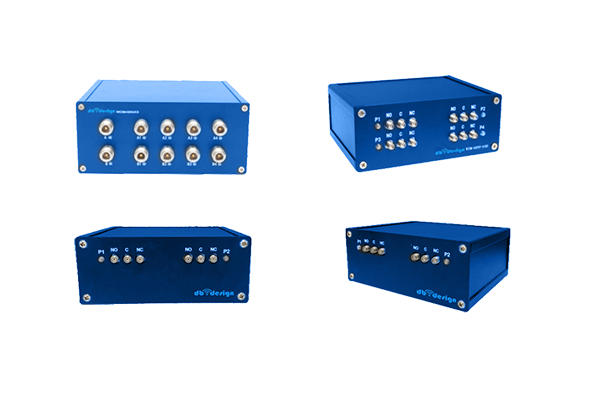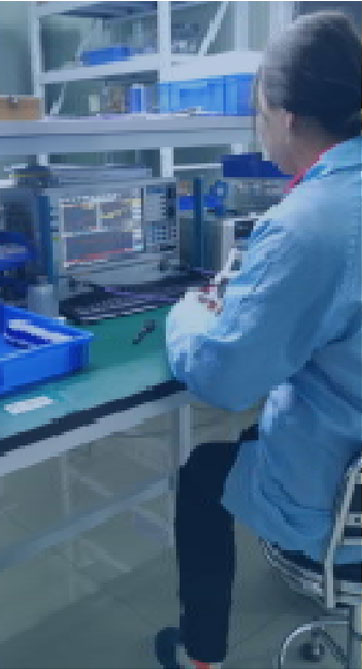
Pin diode technology has risen to prominence as an important building block in high-frequency designs thanks to its native electrical features Their rapid transition between on and off states together with minimal capacitance and low insertion loss suits them for switching modulation and attenuation roles. The main mechanism of PIN diode switching uses bias voltages to regulate copyright flow through the device. Applying bias shifts the depletion-region extent within the p–n junction and so modifies conductivity. Bias adjustment yields effective PIN diode switching suitable for high-frequency use with limited distortion
In designs requiring accurate timing control PIN diodes are integrated into refined circuit architectures They can function inside RF filters to permit or attenuate targeted frequency bands. Moreover their high-power handling capability renders them suitable for use in amplification division and signal generation stages. The push for compact efficient PIN diodes has led to broader use in wireless communications and radar systems
Designing Coaxial Switches for Optimal Performance
Coaxial switch design is a sophisticated process involving many important design considerations The operation of a coaxial switch is affected by the selected switch topology frequency band and insertion loss behavior. Designs should focus on cutting insertion loss and increasing isolation to improve switch performance
Examining performance entails assessing return loss insertion loss and isolation figures. Measurements rely on simulation, theoretical models and experimental test setups. Accurate analysis is crucial to ensure reliable coaxial switch operation across systems
- Simulation packages analytic approaches and lab experiments are commonly applied to analyze coaxial switch designs
- Factors such as temperature variations impedance mismatch and fabrication tolerances can impact switch behavior
- Recent innovations and trends in coaxial switch design prioritize better metrics together with reduced size and lower power draw
Optimizing LNA Designs for Performance
Enhancing the performance efficiency and gain of a Low Noise Amplifier is vital for preserving signal integrity in many systems Achieving results demands careful transistor picks optimized bias settings and considered topology design. High quality LNA layouts suppress noise sources and deliver amplified signals with limited distortion. Modeling simulation and analysis tools play a central role in evaluating the impact of design decisions on noise. Reducing the Noise Figure remains the design target to ensure strong signal retention with minimal added noise
- Prioritizing low-noise transistors is crucial for optimal LNA performance
- Implementing suitable and optimal bias conditions helps minimize transistor noise
- The overall noise outcome is greatly affected by the selected circuit topology
Techniques like impedance matching noise cancellation and feedback control can further elevate LNA performance
RF Signal Routing with Pin Diode Switches

PIN diode switch networks offer flexible and efficient means to route RF energy in many systems Such semiconductor switches toggle quickly between states to permit dynamic control of signal routes. Low insertion loss combined with excellent isolation is a primary advantage that reduces signal degradation. Typical applications include antenna switching duplexing and RF phased arrays
A PIN diode switch’s operation depends on modulating its electrical resistance with a control voltage. When off the diode’s high resistance isolates and blocks the RF path. A positive bias drives the diode into lower resistance so RF energy can pass through
- Furthermore additionally moreover pin diode switches deliver fast switching speeds low power use and compact footprints
Diverse design options and architectures for PIN diode networks allow implementation of sophisticated routing functions. By interconnecting multiple switches designers can build dynamic switching matrices for flexible path configuration
Coaxial Microwave Switch Assessment and Efficacy

Detailed assessment and testing validate coaxial microwave switches for optimal function across electronic systems. A range of factors like insertion reflection transmission loss isolation switching rate and bandwidth affect switch performance. Comprehensive assessment includes testing these parameters under multiple operating environmental and test scenarios
- Additionally the evaluation should incorporate reliability robustness durability and capacity to handle severe environmental conditions
- Finally results from comprehensive testing offer crucial valuable essential data to inform selection design and optimization of switches for particular applications
Comprehensive Review on Reducing Noise in LNA Circuits
Low noise amplifier circuits are essential components in many wireless radio frequency and RF communication systems because they amplify weak signals while limiting added noise. The review supplies a broad examination analysis and overview of methods to diminish noise in LNAs. We investigate explore and discuss critical noise mechanisms like thermal shot and flicker noise. We further analyze noise matching feedback topologies and bias optimization strategies to suppress noise. The article highlights recent advances such as novel semiconductor materials and innovative circuit architectures that reduce noise figure. By giving a clear understanding of noise reduction principles and practices this article aims to assist researchers and engineers in developing high performance RF systems
Applications of PIN Diodes for Fast Switching

PIN diodes’ unique remarkable and exceptional behavior makes them appropriate for fast switching systems Low capacitance and low resistance contribute to very fast switching enabling precise timing control in demanding applications. Further PIN diodes’ proportional response to voltage facilitates exact amplitude modulation and switching control. Versatility flexibility and adaptability enable their suitable applicable and appropriate deployment in many high speed applications Examples of deployment include optical communication systems microwave circuits and signal processing equipment and devices
IC Coaxial Switch and Circuit Switching Advances
Coaxial switch integrated circuits deliver improved signal routing processing and handling within electronic systems circuits and devices. These specialty ICs are engineered to control manage and direct signal flow through coaxial cables offering high frequency performance and low latency propagation insertion times. Miniaturization inherent in IC technology yields compact efficient reliable and robust designs suited for dense interfacing integration and connectivity requirements
- Through careful meticulous and rigorous implementation of these approaches engineers can achieve LNAs with exceptional noise performance supporting sensitive reliable systems With careful meticulous and rigorous deployment of these approaches developers can accomplish LNAs with outstanding noise performance enabling trustworthy sensitive electronics Through careful meticulous and rigorous application low-noise amplifier of such methods engineers can design LNAs with top tier noise performance enabling dependable sensitive systems By meticulously carefully and rigorously applying these methods developers can produce LNAs with superior noise performance enabling sensitive reliable electronics
- Application fields encompass telecommunications data communications and wireless networking
- Integrated coaxial switches are valuable in aerospace defense and industrial automation use cases
- Consumer electronics audio visual equipment and test and measurement systems are typical domains
Low Noise Amplifier Design for mmWave Systems

LNA design at millimeter wave frequencies faces special challenges due to higher signal attenuation and amplified noise impacts. Parasitic effects are dominant at mmWave thus careful layout techniques and component choices are crucial. Keeping input mismatch low and power gain high is critical essential and important in mmWave LNA designs. Active device choice, e g HEMTs GaAs MESFETs InP HBTs, is critical for low noise performance at mmWave. Additionally the careful design and optimization of matching networks is essential to ensure efficient power transfer and good impedance match. Consideration of package parasitics is required because they may adversely impact LNA performance at mmWave. Selecting low-loss transmission paths and optimal ground plane layouts is essential necessary and important for reducing reflection and preserving bandwidth
PIN Diode RF Switching Characterization and Modeling
PIN diodes act as fundamental components elements and parts for many RF switching uses. Precise accurate and detailed characterization of such devices is essential for designing developing and optimizing reliable high performance circuits. It consists of analyzing evaluating and examining electrical voltage current characteristics including resistance impedance and conductance. Also measured are frequency response bandwidth tuning abilities and switching speed latency or response time
Moreover additionally furthermore creating accurate models simulations and representations for PIN diodes is crucial essential and vital to forecast behavior in RF systems. Various modeling approaches such as lumped element distributed element and SPICE models are used. The selection of an apt model simulation or representation relies on particular application requirements and the expected required desired accuracy
Advanced Cutting Edge Sophisticated Techniques for Low Noise Quiet Minimal Noise Amplifier Design
Engineering LNAs demands careful topology and component decisions to achieve superior noise performance. Recent semiconductor breakthroughs and emerging technologies enable innovative groundbreaking sophisticated noise reduction design techniques.
Among several numerous numerous these techniques are employing utilizing implementing wideband matching networks incorporating low noise transistors with high intrinsic gain and optimizing biasing scheme strategy approach. Furthermore advanced packaging and thermal control strategies play an essential role in lowering external noise contributions. With careful meticulous and rigorous execution of these strategies designers can obtain LNAs exhibiting excellent noise performance for sensitive reliable systems
